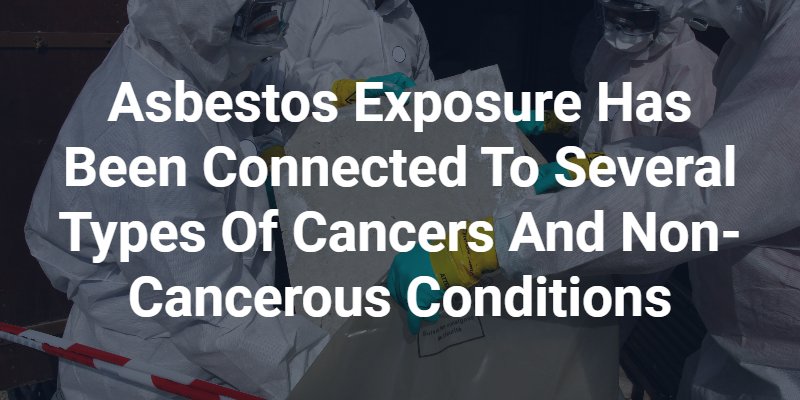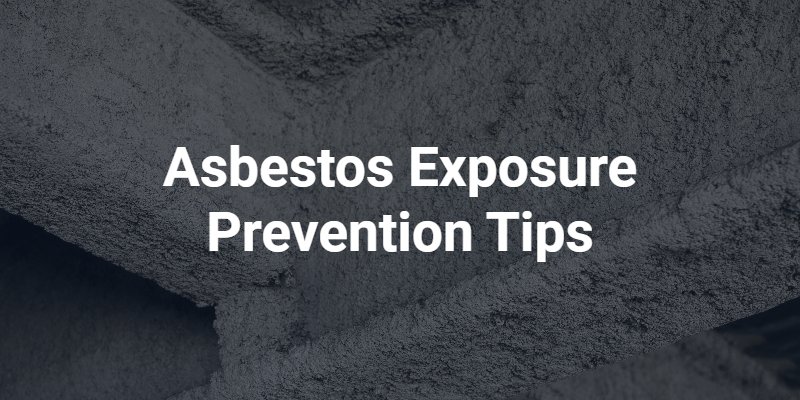Exposure to asbestos has been connected to many serious cancers and diseases, including a rare and deadly type of cancer known as mesothelioma. Asbestos is a group of minerals that can cause health complications years or decades after the date of exposure.
Although no amount of asbestos exposure is classified as safe, most illnesses associated with asbestos occur due to prolonged exposure. Despite the known risks of asbestos, it is currently not fully banned in the United States, is still imported for various uses, and can still be found in numerous places and products.
What Is Asbestos?
Asbestos refers to a group of six naturally occurring minerals. They are light, fibrous and can easily become airborne. This can result in them being inhaled or ingested by an individual and getting lodged in the body’s tissues. Embedded asbestos fibers in the body can cause irritation and a buildup of scar tissue over time. Asbestos is a known carcinogen, meaning this irritation and scarring can cause cancer and other adverse health effects.
What Are the Dangers of Asbestos Exposure?
Asbestos poses a health hazard by becoming permanently lodged or embedded in the respiratory system, digestive tract or other parts of the body. The body can eliminate some asbestos, but not all of the particles. When asbestos fibers accumulate within the tissues, they can cause irritation that eventually forms tumors. Some of these tumors are cancerous.

In addition to cancer, the inflammation or damage caused to the tissues can result in breathing problems, pulmonary issues and cellular changes.
Asbestos exposure has been connected to several types of cancers and non-cancerous conditions, including:
- Mesothelioma
- Lung cancer
- Asbestosis
- Pleural plaques
- Pleural effusion
- Stomach cancer
- Esophageal cancer
- Throat or laryngeal cancer
- Ovarian cancer
- Colon cancer
According to the National Library of Medicine, asbestos exposure currently puts around 20 million people in the United States at risk of developing mesothelioma. This is a rare malignant cancer that most often develops in the lining of the lungs (the pleura) or abdomen (peritoneum). How asbestos affects an individual depends on the amount, duration, type and size of the asbestos fibers, the source of the exposure, and individual risk factors (e.g., smoking or pre-existing lung disease).
How Much Asbestos Exposure Is Too Much?
No level of asbestos exposure is considered safe by researchers. Even a small amount of the carcinogenic fiber inhaled or ingested into the body could be enough to eventually cause health problems. However, the majority of mesothelioma cases and serious medical conditions arise after prolonged exposure, such as years of repeated exposure to asbestos at work or school. For this reason, those most at risk from asbestos are those who work or live around this mineral on a daily basis.
How Can You Be Exposed to Asbestos?
In the late 1970s, asbestos was mostly banned in the United States. However, it is not fully prohibited and still exists in small quantities in certain products. In addition, asbestos-containing materials are still present in millions of older buildings. Asbestos was widely used in building and construction due to its natural durability and fire-resistant properties.
Today, you could be exposed to asbestos in many places, such as:
- A home or residence
- A workplace or office
- The military
- Construction or demolition sites
- Industrial settings
- Automotive shops
- Steel mills
- Oilfields
- Shipyards
- Power plants
- Chemical plants
- Factories
- Commercial buildings
- Schools
- Products that contain asbestos or talc
Asbestos fibers that have settled in older buildings could be stirred up and enter the air due to renovation, demolition or construction projects. If asbestos dust is disturbed, it can become airborne again – putting anyone nearby at increased risk of exposure. Those most at risk of asbestos exposure are those who regularly work with products and materials that contain asbestos. This may include brake pads, insulation materials, tiles, ceramics, adhesives, paints, cement and talcum powder products.
Secondary Asbestos Exposure
Even if you do not work directly with asbestos, you could still contract an asbestos-related cancer or disease due to secondary exposure. This occurs when people who work with asbestos unknowingly bring fibers home with them on their clothes or items. This puts the worker’s spouse and children at risk of secondary or indirect exposure to asbestos – especially if a spouse launders the contaminated worker’s clothes.
What Are the First Signs of Asbestos Exposure?
Asbestos exposure does not cause any immediate signs. Instead, it often takes many years to cause enough damage to show symptoms. The latency period, which is the interval between the date of initial exposure and the development of mesothelioma, ranges from 20-60+ years and is influenced by the amount of asbestos exposure.
Once asbestos exposure does result in noticeable symptoms of a disease, the first signs often include:
- Trouble breathing
- Shortness of breath
- Dry coughing
- Wheezing
- Chest pain or tightness
- Trouble swallowing
- Fluid buildup (effusion)
- Fatigue
These are common symptoms associated mainly with pleural mesothelioma. According to the Centers for Disease Control and Prevention, this is the most common type, accounting for 82.1 percent of diagnoses from 1999 to 2018.
If a victim suffers abdominal issues due to asbestos, early signs can include:
- Stomach pain
- Pelvic pain
- Abdominal swelling or distention
- Bowel obstruction
- Hernia
- Loss of appetite
- Unexplained weight loss
As the asbestos-related disease continues to affect the body, a patient may also notice a cough that gets worse over time, bloody sputum, clubbed fingers, anemia, and swelling of the face or neck. Diagnosing an asbestos-related disease often requires chest x-rays, body scans and a tissue biopsy to confirm the presence of asbestos.
Preventing Asbestos Exposure
If you are experiencing potential symptoms of mesothelioma or another disease and think you’ve been exposed to asbestos in the past, tell your doctor. Remember that you may not notice any immediate signs, but you may experience symptoms several years later.

Use these tips to prevent asbestos exposure in your daily life:
- Have a professional inspect for asbestos before starting a home renovation project.
- Wear personal protective equipment, including a respirator, if you may encounter asbestos.
- If you think you see asbestos fibers, don’t disturb them. Call a professional for proper removal.
- Never try to remove or handle asbestos yourself.
- Wear the appropriate protective gear if you work with asbestos regularly.
- Take precautions to avoid bringing asbestos home from work, such as changing your clothes.
If you are diagnosed with an asbestos-related disease, don’t give up hope. Some are curable, and those that are not can still be treated with modern medicine to improve a patient’s survival rate and quality of life. If you were exposed to asbestos due to someone’s negligence, such as a careless employer, you may be eligible for financial compensation. Consult with an asbestos attorney to learn more about your legal options.

